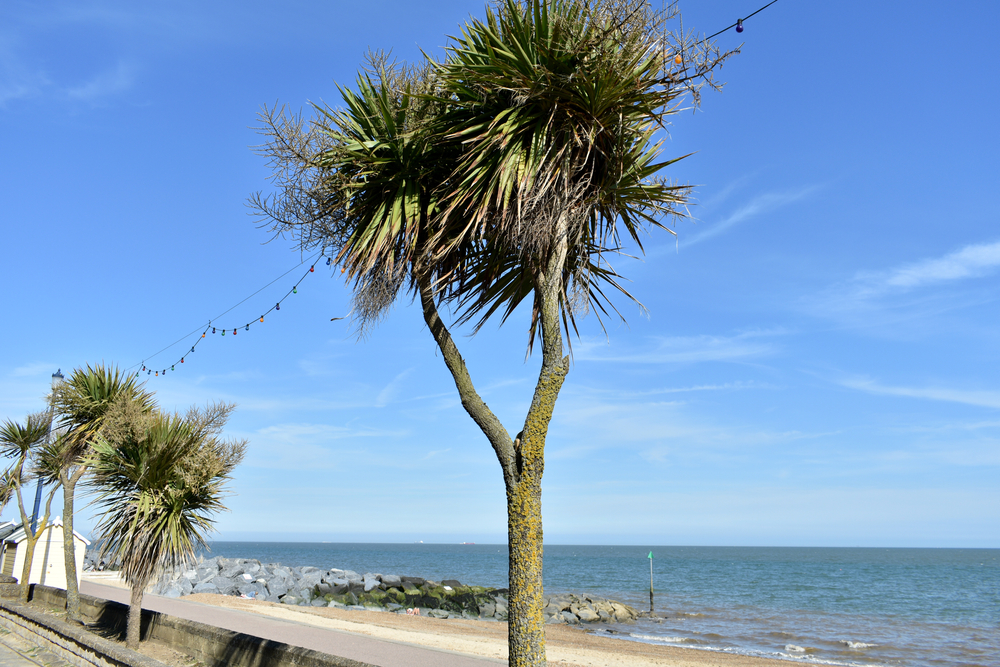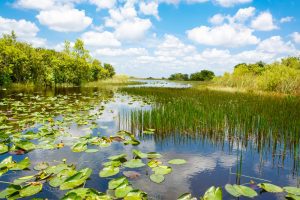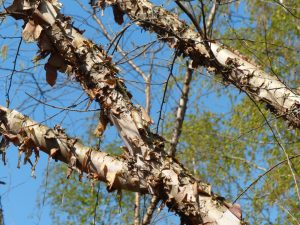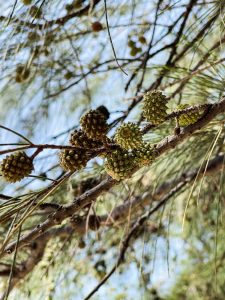Palm trees are part of the Arecaceae family, a monocot plant commonly grown in tropical and subtropical countries.
However, one might wonder – why are palm trees taking over Britain, a country with mostly cool and cloudy climates?
Although it is a given that most palm trees are found in warmer climates, it doesn’t mean they can’t withstand colder climates.
So, can a palm tree survive Britain’s weather? Yes, especially in oceanic climate areas including southern and southwest Britain.
Additionally, palm trees are ideal in Britain’s seaside towns or places nearby water. These areas are freeze-free since they have a warm sea current that makes them tolerable for palms.
However, not all types of palm trees can live in Britain.
You have to have the right type of tree suitable to your location’s weather conditions. Without the proper combination, the palm tree will likely die.
Here is a list of palm trees that grow in Britain, where to grow them, and how to care for them.
Table of Contents
What are the best palm tree species to grow in Britain?
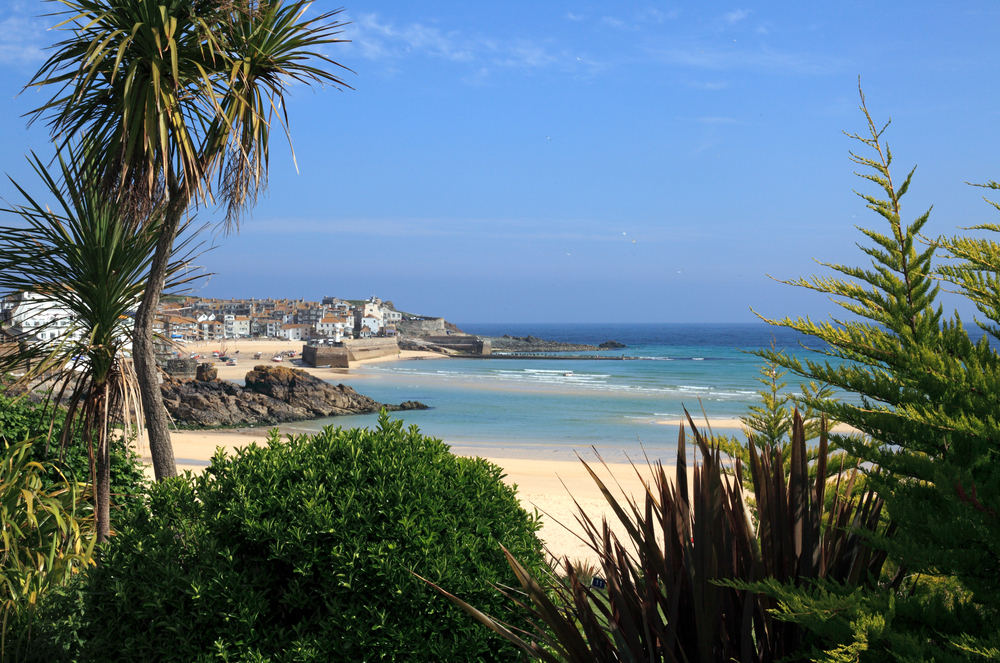
Although most palm trees grow in tropical climates, you’ll find a few palms that grow well in several areas of Britain.
If you’re looking to grow palms in your garden or are just curious to know which palms tolerate cold weather, here’s an A-to-Z list of palm trees you should know about.
Cabbage Palm
Native to Southeast USA, Cuba, and the Bahamas, the Cabbage Palm or Sabal palmetto is a small tree that grows up to 50 ft in height with costa palmate leaves of about 5.1 mm.
It requires full or partial sunlight and can tolerate temperatures of 15°F or -9°C.
California Fan Palm
The California Fan Palm, Washington Palm, or Washingtonia filifera, is a tall, fast-growing desert fan palm that tolerates sub-freezing temperatures as low as 15°F to 20°F.
This plant is ideal for southern areas with large gardens since it grows up to 65 ft tall and requires full sun exposure.
Canary Island Date Palm
Native to the Canary Islands, the Canary Island Date Palm or Phoenix canariensis is a fast-growing palm that can be grown in gardens with temperatures as low as 10°F.
However, it is still recommended to take extra care and move the plant indoors to protect it from harsh wind and cold. It has pinnate leaves that are about 20 ft long and can survive with just partial sunlight.
Caranday Palm
The Caranday Palm or Trithrinax campestris is a slow-growing palm with only a short stem of up to about 19 ft tall. It has round palmate leaves that grow approximately 3 ft long.
Planting a Caranday Palm requires well-drained soil and enough warmth and sunlight.
Chilean Wine Palm
Known as Jubaea chilensis, the Chilean Wine Palm is a feather palm with long yellow to deep green pinnate leaves. Its grayish trunk can grow up to 2 or more meters in diameter.
It can tolerate warm and cold climates. However, it is best to cover the leaves or move the plant indoors during the winter season.
Chinese Fan Palm
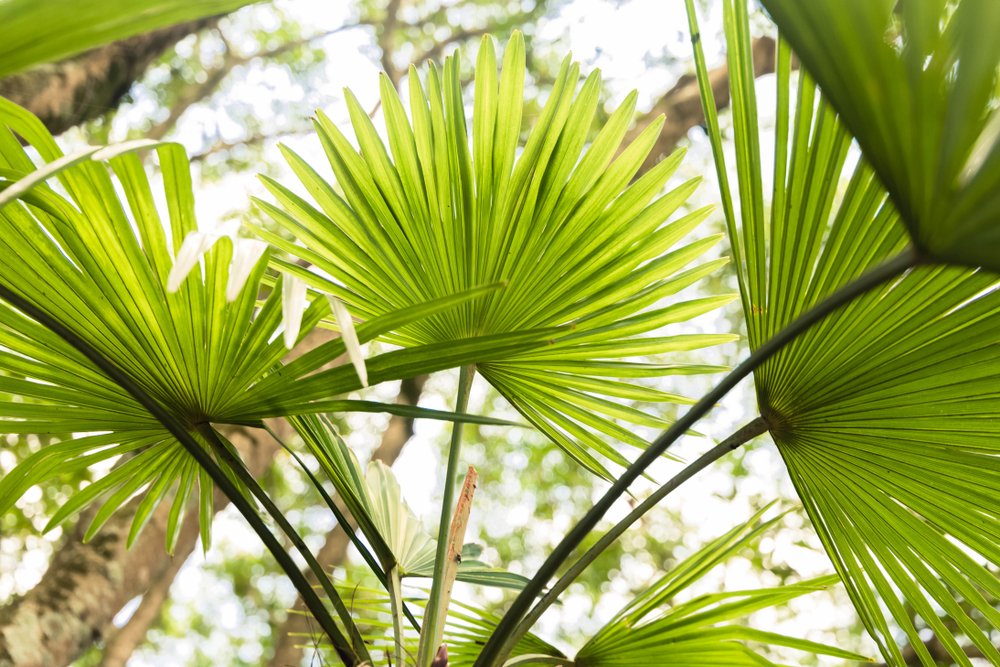
A native in Asia, this palm’s botanical name is Livistona chinensis. This type of palm tree requires full to partial sunlight and is best placed in moist and well-drained soil.
It grows up to 50 ft tall and has a grayish trunk and fan-shaped foliage that may look like a fountain.
Chusan Palm
This type of palm tree is best for all seasons and can cope with temperatures as low as -15°C. However, expect possible foliage damage if it’s left out in harsh temperatures and winds.
The Chusan palm requires well-drained soil and should be placed in a sunny location.
Date Palm
Phoenix dactylifera is commonly known as Date Palm, which as its name suggests, produces the fruit dates, making it one of the most important palm trees for food.
It can grow up to a height of about 75 ft and has cylindrical date fruits. Date palm trees need full sun exposure and can be cultivated in colder areas where temperatures reach about 18°F.
Dwarf Chusan Palm
Similar to the Chusan Palm, the Dwarf Chusan Palm or Trachycarpus wagnerianus is also known as the Waggy and is an ideal ornamental plant.
Its features are similar to the Chusan Palm but with smaller stiff leaves of about 3 ft long and a stiffer thick stem. The height grows up to 16 ft and features a fibrous brown stem.
To cope with windy and cold conditions, it requires full to partial sun exposure and well-drained soil.
Dwarf Fan Palm
The Dwarf Fan Palm is also known as the European Fan Palm or Mediterranean Dwarf Palm. It is one of the most ideal palms for surviving cold spells.
It grows up to 6 ft tall in heavy clay and well-drained soil and can have full or partial sun exposure. This palm can tolerate low temperatures of up to 14°F or -10°C, especially as a mature plant.
Everglades Palm
Everglades Palm or Acoelorrhaphe wrightii is a native plant of the Bahamas, Central America, the Caribbean, and Mexico. It is a medium-sized palm with clustered slender stems and fan-shaped leaves.
Its height can reach up to 23 ft with a stem diameter of about 6 in. This palm is salt-tolerant and can survive in sandy soil and low temperatures.
Jelly Palm
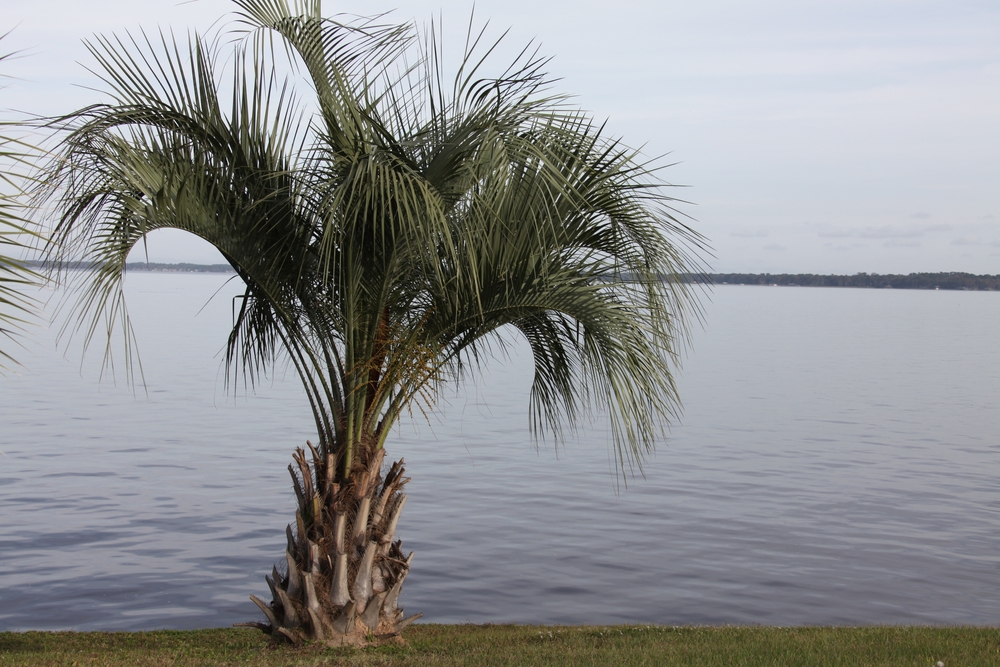
Originally from Brazil, the Jelly Palm or Butia capitata is one of the hardiest plants perfect for Britain’s weather. It requires well-drained soil to maintain its beautiful grayish-green feather foliage and survives tough weather conditions.
This palm produces ripe fruits in late summer that are sweet and tasty.
Lady Palm
The Lady Palm is also called the bamboo palm since it has similar stems to bamboo. It grows up to 15 ft tall with multi-stems and dark green fanned leaves.
They’re easy to grow in full or partial sunlight and can tolerate low temperatures.
Mexican Blue Palm
Although it can survive wind and cold temperatures, this plant is not as hardy as other palms. It requires protection from harsh weather when needed, especially for young palms. It’s a slow-growing plant that can’t grow in wet clay as it needs well-drained alkaline soil. The Mexican Blue Palm is a steady grower that reaches a 49 ft height and features a stout stem with grayish-blue palmate leaves.
Needle Palm
The Needle Palm is a fan palm that grows clumps of shrublike dark green leaves of about a meter or two in height.
Although this type of palm needs full sun exposure, it can still tolerate temperatures as low as 5°F or -15°C and can even survive up to -15°F or -26°C with expected damage.
Puerto Rican Thatch Palm
A native to Puerto Rico, the Puerto Rican Thatch Palm or Coccothrinax alta is a palmate-leaved tree with a 25 ft stem holding yellow flowers and purple fruits.
It tolerates wind and salt air and can survive low temperatures of up to 28°F. This palm requires full sunlight and is ideal for seaside towns.
Queen Palm
Also known as Syagrus romanzoffiana, the Queen Palm is a medium-sized tree that grows up to 49 ft with dark green pinnate leaves.
It is popularly used as a decorative garden tree for its pleasing feathery leaves that form a canopy. It is a hardy palm that tolerates temperatures of 23°F or -5°C.
Saw Palmetto
Saw Palmetto is a fan-shaped palm named after its saw-like leaf edges, each having about 20 leaflets. It’s a short, shrublike palm with fronds sharp enough to cut skin.
This hardy plant may grow significantly slowly but lives for hundreds of years.
The right location for a palm tree in Britain
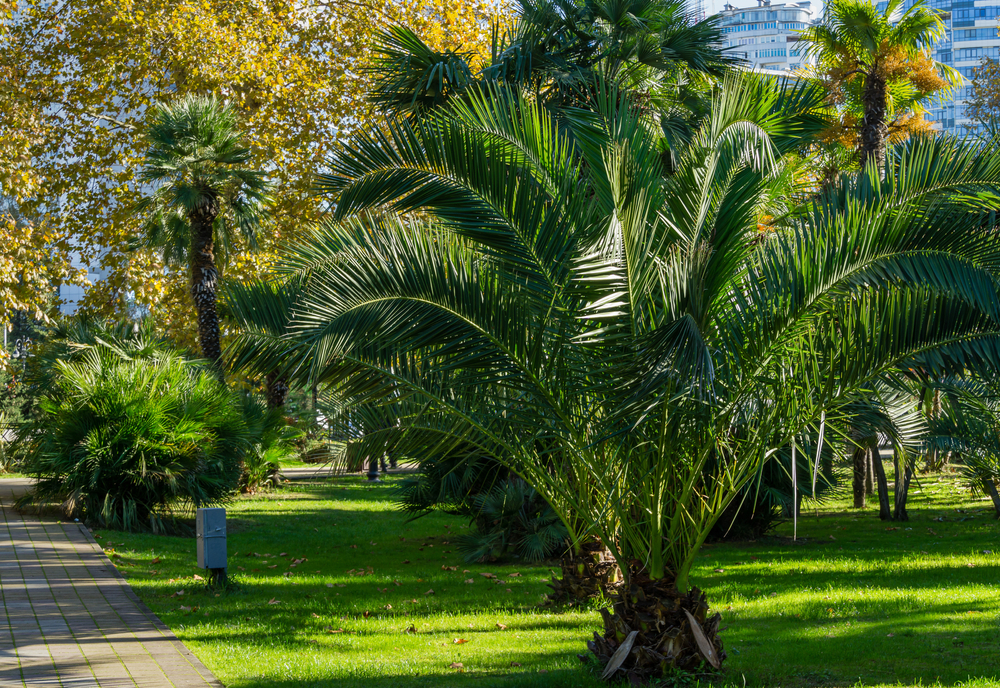
A garden in the south of Britain, such as on the Isle of Wight and the Isles of Scilly, is an excellent place to grow a palm tree as long as certain conditions are met.
Aside from the south of Britain, mature palms can also survive in the north areas such as Manchester.
It’s already been established that most palms need full or partial sunlight, yet they also need to be given appropriate shelter, especially in winter.
Although they can withstand harsh winds and low temperatures, it’s still best to protect them to preserve the beauty of the foliage.
Moreover, having enough space for the palm’s canopy to fully spread out is essential for growth. Planting a palm tree directly into the ground is recommended to thrive better.
Placing it in a pot container is still possible but it may sustain more damage if left outside in winter than a tree planted directly in the earth. However, potted plants are easy to move indoors during poor weather.
Pots are highly recommended for young palms until they are mature and strong enough to be planted in the ground outdoors.
What is the best time to plant palm trees?
Although palm trees can be planted any time of the year, the most recommended time is during the spring and summer seasons when the temperatures are moderate.
In these seasons, palm trees have enough time to grow efficiently without complications before the cold season arrives.
How do I plant a palm tree?

Before planting a palm tree in your garden, choose an area with sunlight and shade. To transfer a palm tree from the pot, dig a hole twice the size of the pot and a few inches deeper.
In the hole, make sure there is adequate slow-release palm fertilizer before placing the plant.
Carefully, remove the plant’s root ball, which is the compact mass of roots. Remember, it’s important to keep them intact and minimize soil loss around the root ball.
Simply place the root ball into the hole and fill it up with more soil and fertilizer.
Afterward, water the plant and apply new fertilizer and compost in the next months. Do not allow the palm tree to get dehydrated and make sure the soil is kept moist but not overwatered.
If you’re maintaining a potted palm tree, you’ll need to be prepared to repot it once it gets too large.
How do I care for a palm tree?
Although palm trees are easy to grow, continuous care is necessary to have a healthy palm.
Depending on the type of palm, you may need to learn about specific maintenance practices in terms of proper positioning, choosing the right soil, watering, ensuring sunlight, pruning, and winter care.
Generally, palm trees grow better in tropical or subtropical temperatures, but they can still thrive in suitable conditions in some parts of Britain.
We all know that sunlight is essential for plants. However, not all palms need full sun exposure. Get to know the needs of your palm tree as some need full and direct sunlight while others require shady gardens.
Some palm trees are sensitive to strong winds and too much heat, which can lead to burns and dead fronds. Thus, having a shaded garden for these types of palms is recommended.
When watering palms, it should have ample drainage to prevent waterlogging.
If you recently planted a palm tree in the ground, it should be watered daily in the first week. Choosing the right fertilizer and compost is also essential for any palm’s health.
Most palm trees do well with soil-based compost to help keep the soil moist.
If using heavy clay soils, keep in mind these are more susceptible to waterlogging. Pruning isn’t always necessary for palm trees.
However, when there is an overgrowth or dead leaves, these can be removed.
How do I protect palm trees in the winter?
Having a palm tree in Britain can be a challenge, especially in the winter season. Fortunately, there are several effective ways to minimize the damage during cold spells.
Although the hardy palm trees mentioned above can survive winter temperatures, it’s still best to have extra protection to maintain their health and beauty.
To prevent sudden freezes, a freeze-protecting spray can help shield palms. Moreover, covering them with sheets and blankets can help warm them up and prevent freezing.
Even if the leaves are destroyed from freezing, it is important to protect the roots.
Applying enough mulch and fertilizer helps palm trees survive with optimal health while protecting their roots from frost damage.
If the leaves are damaged or turn yellow, don’t worry! These will usually flourish again in spring and summer.
What are common problems associated with growing a palm tree?
Weather, nutrition, and pests – these are some of the most common things that affect the health of a palm.
When you notice wilting and drooping of the leaves, it is a sign of palm tree trunk rot that is normally caused by a fungus.
When there are black bumps on the fronds, it is most likely false smut which happens with high humidity.
Aside from diseases, palm trees can die from pests like aphids and mites. These bugs usually drink the juice and nibble the fronds, which eventually causes the fronds to turn yellow.
Luckily, insecticides help control and eliminate these unwanted pests.
Final Thoughts
In a nutshell, it is possible to grow a palm tree in Britain, especially in the southern areas. However, keep in mind that certain conditions must be met to maintain a palm tree and keep it in good health.
Should you decide to care for a palm tree, we recommend starting small with a potted palm and buying it during spring or summer.
In this way, when winter comes, your palm tree will be mature enough to withstand the cold temperatures well and you can easily take it indoors to protect it.

